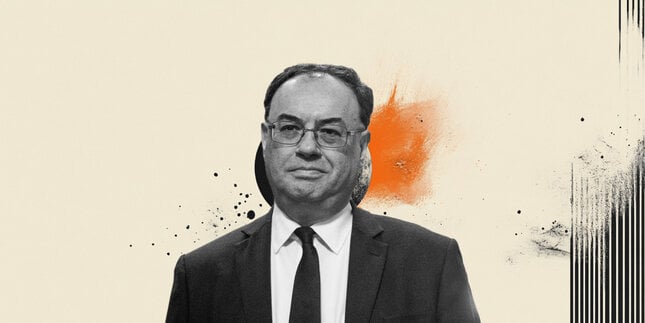Fed's Bostic: Economy is expected to lose further momentum
|Raphael Bostic of the Federal Reserve Bank of Atlanta warned that rising price pressures over the next six to twelve months could intensify the Fed’s challenges.
Raphael Bostic of the Federal Reserve Bank of Atlanta warned that rising price pressures over the next six to twelve months could intensify the Fed’s challenges.
Fed Bank of San Francisco President Mary Daly noted late on Wednesday that despite overall progress, the Fed still has some ground to cover on its fight with inflation pressures, and cautioned that the Fed may be forced to act soon without having the full picture.
Fed Bank of Boston President Susan Collins and Fed Board of Governors member Lisa Cook participated in a virtual discussion on Wednesday, with both key policymakers cautioning that overarching uncertainty remains a key sticking point for Fed policy transmission.
At its July policy meeting, the Federal Reserve held the Federal Funds Target Range (FFTR) steady at 4.25%–4.50%, exactly as markets had anticipated.
The United States (US) Federal Reserve (Fed) announced on Wednesday that it left the policy rate, federal funds rate, unchanged at the range of 4.25%-4.5% following the June policy meeting. This decision came in line with the market expectation.
The United States (US) Federal Reserve (Fed) announced on Wednesday that it left the policy rate, federal funds rate, unchanged at the range of 4.25%-4.5% following the May meeting. This decision came in line with the market expectation.
EUR/USD remains slightly on the back foot on Friday, trading around 1.1650 amid some modest recovery in the US Dollar. Investors, in the meantime, are expected to shift their attention to next week's US inflation data release. Fed officials' comments and trade news also remain in focus.
GBP/USD now flirts with the 1.3450 zone, managing to bounce off daily lows as the Greenback’s advance loses some traction. The British Pound remains bolstered by the BoE's hawkish cut at its meeting on Thursday. Cable remains en route to close the week with marked gains.
The Bank of England has cut rates by a further 25 basis points to 4% but the statement hints that officials think the easing cycle is nearing its end. Policymakers are visibly worried about a more persistent bout of inflation as the headline number is way higher than target.
Gold seems to have entered a consolidation phase around $3,400 per troy ounce, giving up some gains after previous highs over $3,410. The announcement that the United States would tax one-kilo and 100-ounce gold bars is also supportive of the precious metal.
The cryptocurrency market is relatively bullish on Friday, buoyed by renewed risk-on sentiment from both institutional and retail investors. Bitcoin surged toward the $118,000 round-figure resistance before retreating slightly to trade at around $116,525 at the time of writing.
With a pre-set regularity, a nation's central bank holds a monetary policy meeting where board members take different measures, the most relevant one setting the range of the federal funds rate, which greatly influences the interest rate charge on loans and advances to commercial banks.
In the US, the Federal Open Market Committee (FOMC) of the Federal Reserve (Fed) meets at intervals of five to eight weeks to announce their latest decisions. An interest-rate hike increases borrowing costs throughout the economy. This results in a stronger US Dollar (USD) as it makes the US a more attractive place for international investors. A rate cut, on the other hand, tends to weaken the USD.
If rates remain unchanged, the attention, main news and analysis turn to the tone of the monetary policy statement and the press conference from the Fed’s Chair. Markets analyze whether the tone is hawkish or dovish over future developments of inflation.
The Federal Reserve (Fed) is the central bank of the United States (US) and it has two main targets: to maintain the unemployment rate at its lowest possible levels and to keep inflation around 2%. The Federal Reserve System's structure is composed of the presidentially appointed Board of Governors and the partially appointed Federal Open Market Committee (FOMC). The FOMC organizes eight scheduled meetings in a year to review economic and financial conditions. It also determines the appropriate stance of monetary policy and assesses the risks to its long-run goals of price stability and sustainable economic growth. The FOMC Minutes, which are released by the Board of Governors of the Federal Reserve weeks after the latest meeting, are a guide to the future US interest-rate policy.
Fed official website, on X and Facebook
Jerome Powell
 Jerome Powell took office as chairman of the Board of Governors of the Federal Reserve System in
February 2018, for a four-year term ending in February 2022. His term as a member of the Board of Governors will
expire January 31,
2028. Born in Washington D.C., he received a bachelor’s degree in politics from Princeton University in 1975 and
earned a law degree from Georgetown University in 1979. Powell served as an assistant secretary and as
undersecretary of the Treasury
under President George H.W. Bush. He also worked as a lawyer and investment banker in New York City. From 1997
through 2005, Powell was a partner at The Carlyle Group.
Jerome Powell took office as chairman of the Board of Governors of the Federal Reserve System in
February 2018, for a four-year term ending in February 2022. His term as a member of the Board of Governors will
expire January 31,
2028. Born in Washington D.C., he received a bachelor’s degree in politics from Princeton University in 1975 and
earned a law degree from Georgetown University in 1979. Powell served as an assistant secretary and as
undersecretary of the Treasury
under President George H.W. Bush. He also worked as a lawyer and investment banker in New York City. From 1997
through 2005, Powell was a partner at The Carlyle Group.
Jerome Powell Fed's Profile and Wikipedia
The World Interest Rates Table reflects the current interest rates of the main countries around the world, set by their respective Central Banks. Rates typically reflect the health of individual economies, as in a perfect scenario, Central Banks tend to rise rates when the economy is growing and therefore instigate inflation.




